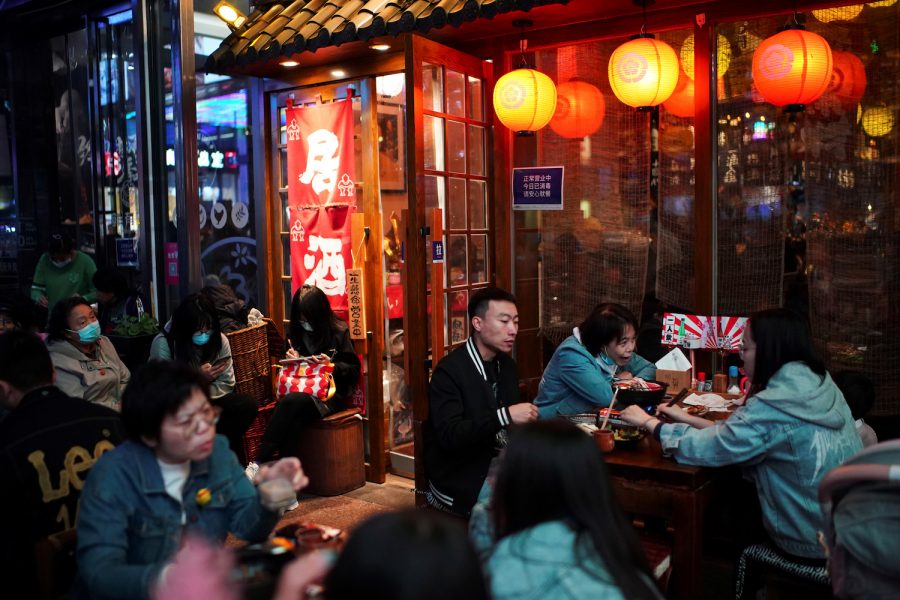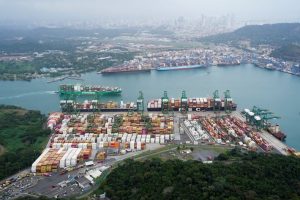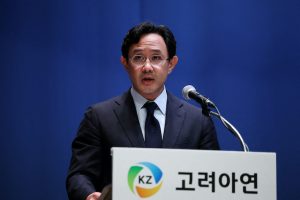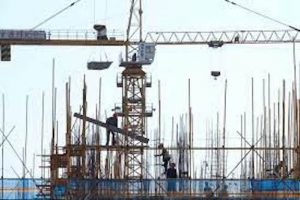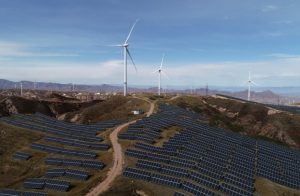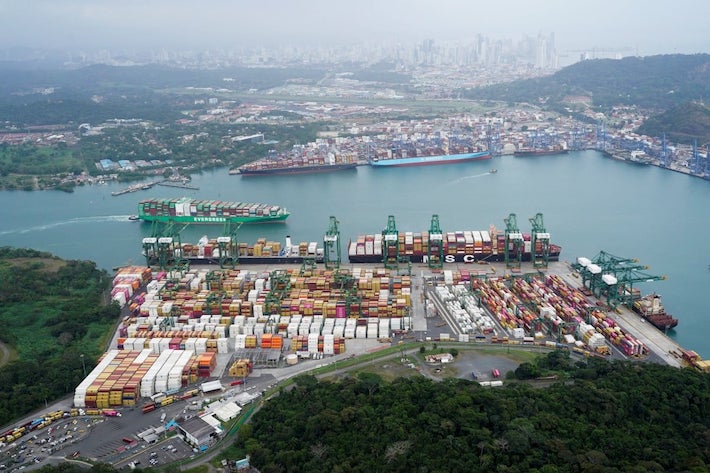China has regained all its output losses following the Covid-19 shock, and staged a V-shaped rebound since the second quarter of 2020. With recovery momentum expected to peak in 1Q21, the next year will be a reset for China’s transformation policies.
China’s policy shift to “dual circulation” suggests domestic demand growth, import substitution and technological self-sufficiency will be key macro drivers for investment decision and opportunities in the coming years.
The emphasis of the 14th Five-Year Plan on a green economy, climate control and manufacturing revitalisation augurs well for sectors in environmental protection and new infrastructure spending on technological innovation and upgrading, artificial intelligence, 5G networks, big data centres, healthcare, water conservation projects and renewable energy, etc.
Quantitative Easing by developed market (DM) central banks will continue to be a push force for investing in global risk assets, all other things being equal, and China’s benign fundamentals will be a pull force for attracting capital inflows, supporting the renminbi and augmenting total returns on Chinese assets for foreign investors.
A Biden administration should reduce the risk premium of geopolitical tensions and a weak US economy on the regional economies, including China’s.
Challenges for 2021
Worries about potential credit events getting out of hand tops the list of concerns about China, as epitomised by the State-Owned Enterprise (SOE) debt defaults this year.
A potential policy mistake by tightening up prematurely or pushing deleveraging measures along with retreating from implicit guarantee too quickly could pull the rug from under the economic recovery and increase the tail risk of a domestic financial crisis.
Deterioration of the pandemic situation (including potential vaccine accidents), escalation of Sino-US tensions (including trade war), prolonged weakness in global demand, sharp narrowing of China’s yield spread over DM and capital/portfolio outflows will be the key external risks in the coming year.
China has recovered all its output losses due to the Covid-19 shock, with the year-to-date growth rate up 0.74% year-on-year in the third quarter of 2020. Its economic recovery started after the -6.8% YoY growth plunge in the first quarter of 2020, followed by the second quarter seeing a V-shaped rebound from that bottom, and the recovery momentum is expected to peak in 1Q21.
My base-case of 6.6% YoY full-year 2021 GDP growth forecast is lower than the consensus at this point because, in my view, Beijing’s resolve to restart its deleveraging and structural reform measures – which will become a policy drag on GDP growth – is much stronger than what the market is expecting.
The lopsided recovery driven only by production growth in 1H20 has been corrected somewhat by an improvement in consumption since 3Q20.
But the demand recovery is still sluggish, given the lingering impact of Covid-19 and Beijing’s policy priority on debt-reduction and structural reforms. Thus, the production side will remain the key growth driver in 2021 with the demand side catching up only gradually.
Successful vaccine development will help boost GDP growth, but the positive impact may not be as dramatic as on the developed world because there is less upside in China’s economic normalisation, with its production side already returning to the pre-Covid-19 level and some important service sectors also normalising.
All this gives Beijing the confidence about the staying power of this economic recovery and encourages it to restart deleveraging, albeit cautiously, in my view.
The deleveraging resolve
China’s debt-reduction and structural reform policies have been put on hold since late 2018 due to the trade war and Covid-19 double-whammy. Despite these growth challenges, it has no mood for boosting high growth anymore and aims at returning to deleveraging once the economy stabilises.
Throughout this down cycle, China’s policy stimuli have been quite restrained compared to its ‘normal self’ and other countries. Beijing has focused on targeted easing for the new sectors, such as technology, services and consumption upgrading, instead of massive reflation.
The recent rise in bankruptcies (including the bank failures in 2019) and bond defaults – as epitomised by some local SOE defaults this year – shows that Beijing prioritised deleveraging and retreating from the distortion created by the implicit guarantee policy as soon as the threat to GDP growth faded.
The SOE bond defaults surprised the market and hurt sentiment, but it also reflects Beijing’s resolve to reinstate its debt-reduction and financial reform initiatives. Of course, there is a policy risk of being overly confident in the system’s resilience and the Covid-19 shock could return. But Beijing is taking its chance for good reasons.
China’s resolve to cut debt and reduce financial risk has been persistent throughout the trade war and Covid-19 shocks, as highlighted by the tightening of control on fintech platforms (including the Ant Financial pullout in November) and the demise of China’s P2P lending business, which was seen as having risks akin to a Ponzi scheme.
The China Banking and Insurance Regulatory Commission reported in late November that the number of China’s peer-to-peer (P2P) platforms had dwindled to zero from a peak of almost 4,000 in late 2016 and early 2017. Indeed, they almost ignited a financial crisis in 2017.
Beijing’s clampdown on the P2P players has not stopped despite the adverse economic conditions since 2018. These moves also show, as I have long argued, that Beijing had prioritised financial stability over anything else at normal times.
Reining in financial risks
The recent controls imposed on the fintech sector are meant to rein in financial risks stemming from non-bank lending, while the P2P panic earlier was a result of Beijing’s retreat from the implicit guarantee policy when CBIRC head Guo Shuqing issued a stern warning in June 2018 that people should prepare to lose their money if an investment promised a 10% return or more.
The regulatory body has followed through with new rules and deleveraging measures to weed out the “P2P Ponzi set-up”.
On the back of the recent bond defaults, Guo Shuqing warned in November and again in December about the need to prevent moral hazard via financial institutions – including the fintech platforms – and that financial institutions should set up early-warning and loss-bearing mechanisms, with the latter using equity to cover any losses.
If the P2P drama is any guide, this warning by Mr Guo heralds new regulatory control of the country’s fintech platforms.
He also indicated that the government would not intervene as long as the financial institutions could resolve their risk, and that there would be strict standards for the use of public funds for financial bailouts.
All this suggests 1) a further retreat of the implicit guarantee policy by Beijing, and, 2) shareholders will have to bear the brunt of any losses that financial institutions suffer.
Policy stance in 2021
While more defaults are expected, Beijing is implementing a managed retreat from its implicit guarantee as a way to deleverage the system by forcing bad companies, including local SOEs, to shut down and make room for growth via new sectors.
This creative destruction process is positive for the Chinese system in the medium-term. The macroeconomic impact should be manageable, though short-term market sentiment could be hurt as investors are uncertain about where the authorities will draw the line for possible bailouts.
The recent bond market sell-off is a solvency issue rather than a liquidity issue. If it eases monetary policy, that would be good news for China Government Bonds and high-quality credit issuers, but it won’t help rebuild confidence in weak local SOEs.
However, as a policy insurance, the PBoC is on standby mode. If the credit events get out of hand, it would likely ease decisively. But these defaults have not affected the economic recovery. So the central bank is still sticking with its neutral policy stance, with its next move dependent on data.
Unless GDP growth disappoints, China’s credit growth cycle has peaked, in my view, with the credit impulse topping out.
This does not mean that the PBoC will tighten up, as some market players have speculated. With the impact from swine flu, flooding and Covid-19 on prices receding and commodity and energy prices remaining in the doldrums, deflationary pressures are dominating in China again.
Beijing’s debt-reduction initiatives will intensify the deflationary pressures at times. There are no grounds for monetary tightening.
The PBoC’s top job is to keep liquidity sufficient to sustain the economic recovery and facilitate Beijing’s financial clean-up efforts without causing a credit default blowout.
It aims at keeping M2 growth at the same pace as the nominal GDP growth rate to stabilise leverage in the system.
Government bond yields are expected to range between 3.0% and 3.5% in 2021, all things being equal, under these policy-balancing objectives.
Post-Trump international environment
Beijing has come to an understanding that its bilateral relationship with Washington has fundamentally and permanently changed from “constructive engagement” in the pre-Trump era to “strategic competition” post-Trump.
But trade and diplomacy could still improve under the Biden administration as the new US president supports multilateralism, as well as opposing unilateral tariff hikes and wants opportunities for dialogue instead of conflict.
So, the probability for tariff-war escalation in 2021 will diminish. This is positive for trade between the two countries and the renminbi exchange rate.
But Beijing will still need to fulfill its commitments to the phase-one trade deal and to offer some favourable terms to facilitate any new Sino-US trade negotiations. Indicators to monitor an improvement in diplomatic relations include a possible revival by Biden of the Strategic and Economic Dialogue with China and a reopening of the consulates in Chengdu and Houston.
Biden’s stance on Taiwan and South China Sea is to keep the status quo while committing to both the One China Policy and the Taiwan Relations Act.
He also intends to reenter the Iran nuclear deal. This means another area of cooperation with China. These policy shifts should lower some key tail risks for the FX market and is, thus, positive for renminbi/yuan sentiment.
Climate goals
Biden has set an ambitious goal of US carbon neutrality by 2050, and Xi Jinping has pledged the same by 2060.
Beijing may try to cooperate with the Biden administration on climate change issues. Biden’s plan could pressure China to cut coal output and subsidies.
This will hurt China’s coal industry. But Beijing has also decided to cut coal consumption as one of its main sources of energy anyway.
The Biden administration is unlikely to reverse Trump’s tech export controls. There may even be more export controls, albeit with a reduced frequency.
But Biden will likely be more flexible in handling tech and national security issues. Some companies on both sides may get a reprieve.
Post-Covid-19, China’s economic policy will be driven by the dual circulation strategy, which is a policy shift since May 2020, to focus on boosting domestic growth and high-tech infrastructure investment while still engaging, but not relying on, the external sector to sustain stable growth in the face of long-term strategic rivalry with the US.
It focuses on industrial upgrading and import substitution with the goal of helping China’s assets to better withstand external market volatility and, thus, attract global investors seeking to diversify returns.
Domestic brands in technological and financial innovation, industrial consolidation, bio-technology and consumer-upgrading will drive the long-term trend of China’s asset prices on the back of a prolonged Sino-US tech war.
Global portfolios tilting east
With China’s long-term policy and growth aspirations to make the country a global economic power and the renminbi a global currency in the long-term, Chinese assets will eventually become an asset class of their own rather than part of the EM asset class. International benchmark service providers are already including Chinese assets in their stock and bond benchmarks.
Long-term investment opportunities in China should relate to and reflect its growth model transformation. The old Chinese model of debt-financed investment-driven growth is gone for good.
China has been transforming its growth model to one that is tech-based and driven by domestic consumption since 2013, when President Xi Jinping came to power.
Covid-19 has sped up this transformation by reinforcing the forces of de-globalisation and economic decoupling from the US.
The year 2021 will be a reset for China’s transformation policies, provided the coronavirus crisis passes without major impacts.
• Chi Lo is the Greater China Senior Economist at BNP Paribas Asset Management
This page was upgraded on January 17, 2022 for style purposes.
ALSO SEE:
China performs its own strategic pivot




